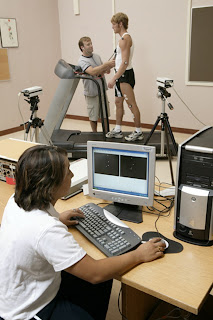Hawaii's geographical location permits its residents to live fairly active lives. Residents of Hawaii can easily participate in many nautical activities like swimming, surfing, diving, etc. Also, the lush valleys of Hawaii allow for hiking, biking, and other physical engaging activities. Because of the reasons stated above and many other factors, Hawaii's is ranked forty-seventh according to a
national ranking of adult obesity taken in 2007.

Even though Hawaii's adults are ranked low, the youth of Hawaii are ranked twenty-ninth according to an article titled, "
New national report on states' obesity rates says not so fat, Hawaii". The average percent of overweight children from ages 10-17 is 14.8 percent, the percent of overweight children in the same age group is 13.3 percent. That percentage has decreased from earlier reports, but obesity is still a growing problem in Hawaii's youth says
health officials. Many believe the problem is the Physical Education programs in Hawaii's schools.
Currently, the
Hawaii Department of Education has
physical education standards that require students from kindergarten though the third grade to have 45 minutes per week of physical education, 55 minutes per week for grades four and five and there are no requirements for any physical education for middle school grades, while High school students in Hawaii are required to take some physical education at some point during their years in high school, says
an article in the Honolulu Star-Bulletin.

Hawaii's physical education requirements are fairly low compared to other states in the United States according to the
2006 Shape of the Nation Report. In that same report, Hawaii is ranked one of the 11 worst states when it comes to meeting physical education requirements in schools. Much of this is due to lack of physical education programs in Hawaii's schools. According to
Donna Ede, only 50 percent have some sort of physical education program. That means about 95 public schools across the state of Hawaii do not have a physical education program.
Written in the Honolulu Star-Bulletin on
May 6, 2006, physical education programs are lacking due to the
No Child Left Behind law, which keep students engaged in a classroom atmosphere, making it hard for many teachers to incorporate P.E. during school hours. But, the state of Hawaii are changing many of their standards to start incorporating more physically fit students and youth.
In
2003, the state of Hawaii decreased the number of credits a student needed in social studies and physical education, in order to add requirements for language, arts, and/or vocational studies. In
2004, the state decided to keep P.E. requirements at one year instead of cutting it down to half a year. The change in amounts of credits needed, could result in an increase in obesity in Hawaii's youth. Therefore, Hawaii's Health Department created "
Hawaii Physical Activity and Nutrition Plan" so both the adults and children of Hawaii become more physically fit and healthy. According to
a study conducted by the Physical Activity and Nutrition Plan, only 30 percent of Hawaii high-school students meet federal guidelines for physical activity. This plan will help the residents of Hawaii, especially the youth, make giant steps toward a physically fit and educated state.
Some schools across the island have created programs that students run around a track and raise money for their school as well as creating awareness to being healthy and fit. Haha'ione Elementary School held it's first "
Fun Run" in the month of August. The students of Haha'ione were educated for the first two weeks of August on the importance of physical fitness as well as health. On August 22, the school held a "Fun Run" so the children could raise money for their school by running around a track. Haha'ione Elementary raised over $10,000 from this event. On January 21, 2008 Ala Wai School is hosting a
"Step It Up" Walkathon. These programs are a great way to encourage students to get up and get active, it involves physical activity and motivates the children to live healthy lives.
 However, the decision to incorporate PE classes into everyday curriculum isn’t as easy as it may seem. While the
However, the decision to incorporate PE classes into everyday curriculum isn’t as easy as it may seem. While the 






